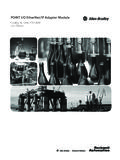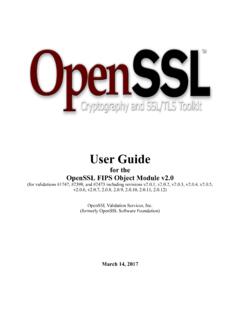Transcription of Guidelines English Module 3 P part - moph
1 Guide for the Quality Module 3- Part P- Finished Product 1 Guide for the Quality Module 3 - Part P Finished Product Prepared by the Technical Subcommittee s experts under the supervision of Dr. Rita Karam, Head of Quality Assurance of Pharmaceutical Products Guide for the Quality Module 3- Part P- Finished Product 2 Drug Name dosage form & Strength Manufacturer: Applicant: ICH: Quality Guidelines : Stability Q1A(R2)-Q1B-Q1C-Q1D-Q1E AnalyticalValidation : Q2(R1) Impurities: Q3A(R2)-Q3B(R2)-Q3C(R4) Pharmacopoeias: Q4B with annexes 1 to 12.
2 Quality of Biotechnological products Q5A(R1)-Q5B Q5C-Q5D-Q5E Specifications : Q6A-Q6B Good Manufacturing Practice : Q7 Pharmaceutical Development : Q8(R2) Quality Risk Management : Q9 Pharmaceutical Quality System : Q10 Development and manufacture of drug substances Q11 Lifecycle management Q12 Guide for the Quality Module 3- Part P- Finished Product 3 Comments Product evaluation ICH MAQ_R1 Guide for quality submission Module 3 Quality Section Drug Product: The composition ( , components of the capsule shell, components of ink used on the drug product) should also be included.
3 If the diluent is co-packaged with the drug product, the information on the diluent should be placed in a separate Drug Product section. The use of an over-fill should be indicated. ICH Q6A ICH Q6B A description of the drug product and its composition should be provided. The information provided should include: Description of the dosage form; Composition, Function of the components, and a reference to their quality standards Type of container and closure used for the dosage form Description and Composition of the Drug Product.
4 Q6A and Q6B And Q8(R2) The Pharmaceutical Development section should contain information on the development studies conducted to establish that the dosage form, the formulation, manufacturing process, container closure system, microbiological attributes and usage instructions are appropriate for the purpose specified in the application. The studies described here are Pharmaceutical development Guide for the Quality Module 3- Part P- Finished Product 4distinguished from routine control tests conducted according to specifications.
5 In addition , this section should identify and describe the formulation and process attributes (critical parameters ) that can influence batch reproducibility , product performance and drug product quality . Supportive data and results from specific studies or published literature can be included within or attached to the Pharmaceutical Development section. Additional supportive data can be referenced to the relevant nonclinical or clinical sections of the application. Components of the Drug Product The compatibility of the drug substance with excipients listed in should be discussed.
6 Additionally, key physicochemical characteristics ( , water content, solubility, and particle size distribution, polymorphic or solid state form) of the drug substance that can influence the performance of the drug product should be discussed. Drug Substance. Guide for the Quality Module 3- Part P- Finished Product 5 For combination products, the compatibility of drug substances with each other should be discussed. A compatibility studies must be performed. The choice of excipients listed in , their concentration, their characteristics that can influence the drug product performance should be discussed relative to their respective functions.
7 Excipients Drug Product Some slides from DrSawaya to illustrate: This section describes how the final formulation was arrived at. It should give a brief history of the development including the failures along the way. We must try to establish that there is a logical and scientific basis for choosing the proposed formulation from pre formulation to formulation to pilot to production. Comparative dissolution test between test product and reference product(on 3 pHs) Comparative dissolution test among strengths (on 3 pHs).
8 At least 12 units should be used for each profile determination. The dissolution measurements of the test and reference batches should be made under exactly the same conditions. The dissolution time points for both the profiles should be the same ( , for IR products 15, 30, 45, 60 minutes; for ER products 1,2,3,5,and 8 hours). For products which are rapidly dissolving, , more than 85% in 15 minutes or less, a profile comparison is not necessary. Difference Factor f1 is a measure of relative error between the two Q8(R2) A brief summary describing the development of the drug product should be provided, taking into consideration the proposed route of administration and usage.
9 The differences between clinical formulations and the formulation ( composition) described in should be discussed. Results from comparative in vitro studies ( , dissolution) or comparative in vivo studies ( , bioequivalence) should be discussed when appropriate. Formulation Development. Guide for the Quality Module 3- Part P- Finished Product 6 curves of dissolution Similarity Factor f2 Using an average difference of 10% between two dissolution profiles at all sampling time points: f2 is about 50 A test batch dissolution is therefore considered similar to that of the reference batch if the f2 value of the two true profiles is not less than 50.
10 Ideally for curves to be similar: f1 should be close to 0, and f2 should be close to 100 Practical considerations: f1 between 0 to 15 and f2 between 50 to 100 Or A summary of dissolution development can be included in , with cross-reference to studies in Module 5, as considered appropriate. Only in two cases : -To compensate losses -For vitamin preparations. Any overages in the formulation(s) described in should be justified Overages. A summary of dissolution development should be included in , with cross-reference to studies in Module 5, as considered appropriate.





